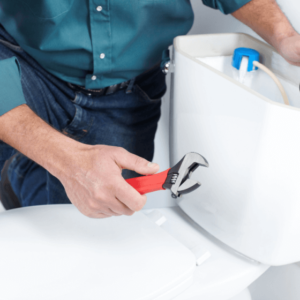Did you know that flood damage in the United States has cost home and business owners nearly $75 billion in the last three decades? It’s difficult to imagine, but those images of flooded homes and neighborhoods are a harsh reality millions face.
Flooding isn’t just a minor inconvenience. It can decrease the structural integrity of your home, putting you and your family at risk. That’s not even mentioning issues with mold and bacteria that could affect your health long term. Needless to say, keeping your home free of water damage and floods is paramount.
You can’t fight Mother Nature entirely, but there are many ways to prevent flooding.
Evaluate Your Home’s Risks
Do you even need to know how to prevent floods from occurring? Heavy rains can cause flood damage pretty much anywhere. With the unpredictable nature of weather these days, you can never be too prepared. That said, it’s a good idea to evaluate your risks.
Understanding your home’s risks can help guide your disaster preparedness efforts and give you more insight into the steps you need to take.
What Causes Home Flooding?
Floods are both predictable and unpredictable. While you can use risk analysis to determine a property’s susceptibility, floods can seemingly come out of nowhere. Here are some of the most common environmental causes of flooding:
- Heavy rain
- Storm surges
- Tsunamis
- Overflow from nearby bodies of water
- Melting snow or ice
- Dam or levee damage
- Overflowing storm drains or ditches
Is Your House in a Flood Zone?
Turn to the Federal Emergency Management Agency (FEMA) when evaluating your risks. The FEMA flood map is a valuable resource that lets you search for individual addresses. The map uses colors and patterns to indicate potential flood zones. It’s surprisingly in-depth, and it can help you learn how to prevent flooding in low-lying areas.
You can look into other property details, too. For example, you can check for elevation details, drainage maps, and surrounding environmental features to better understand your home’s risks.
Unfortunately, many details that impact the potential for flooding are unchangeable. Poor development plans from the past put almost 15 million homes across the nation at risk for flooding.
While you can’t avoid floods entirely, you can create a disaster plan to respond quickly and minimize damage. That includes turning off the electricity to the house, storing critical documents safely, and having an evacuation route in mind.
How to Prevent Flooding at Home
Dealing with the effects of a flood is never easy. Depending on the extent of the damage, you could be looking at thousands of dollars in repairs. That’s not even considering the invaluable personal possessions you could lose.
The best way to mitigate the fallout of a flood is to prepare for the disaster before it comes. Here are some ways you can do just that.
Improve Your Property’s Drainage
Next time it rains, pay close attention to how water accumulates in your yard. Ideally, your house should be slightly higher than the surrounding land. That way, water can flow away from your home.
If you notice the opposite, you need to learn how to prevent rainwater from entering your house. Otherwise, you’ll have a chronic flooding problem that spells disaster during torrential downpours.
Consider speaking to a landscaper or contractor. Your best bet is to grade your property to improve drainage and ensure that water flows away from your house.
Seal Basement Openings
Do you have egress windows leading to your basement? What about a separate entry door? Whatever the case might be, check all openings.
Leaks can cause significant headaches if you don’t address them. A few drops of moisture don’t seem like much. But those leaks highlight potential weak points that could give way in a flash flood.
Use caulk and sealant to make everything watertight. Then, explore drainage options for window wells to avoid water accumulation.
Inspect Your Foundation Regularly
While you’re checking all known openings, look for leaks. It’s always a good idea to invest in annual foundation inspections. Basement foundation leaks can worsen over time, leading to significant damage in the future.
A professional should look for cracks, structural damage, and weak points. Careful inspection around utility and exhaust penetrations is a must, too.
Examine Utilities and Appliances
Many homeowners rightfully focus on the risk of flash floods. However, plenty of things inside your home could cause flooding. Many of your water-based appliances can wreak havoc when damaged.
The worst offenders are refrigerators, washing machines, dishwashers, and water heaters. Broken water pipes or leaking HVAC components could also pose problems.
Inspect your appliances regularly, and address any issues to avoid problems later. If any machines are on the second floor, consider putting them in a pan to prevent unwanted overflow.
Install a Sump Pump Backup
Want to know how to prevent a house from flooding? One of the best preventive steps you can take is to install a sump pump. Sump pumps sit at the lowest point of your home. Usually, that’s the basement.
If any water starts to accumulate, the sump pump takes action to remove it. It’s a simple investment that can be a lifesaver should disaster strike.
Most homes with basements already have a sump pump. Once again, inspect it regularly to ensure that it’s always working. It’s also good to connect a backup battery to continue water removal even if the power cuts off.
Invest in a Flood Barrier
Another worthwhile investment to consider is a floor barrier. Also known as a flood skirt, this equipment does precisely what it sounds like. It acts as a physical barrier to prevent flooding in your house.
There are many designs available. Some install around windows, doors, and vulnerable areas. You may also find temporary barriers you set up when you believe flooding is possible. Fancier models are automatic, responding to rising water levels in real time.
Any form of a flood barrier is better than nothing at all.
Have a Supply of Sandbags on Hand
Using sandbags is a tried-and-true method for stopping floodwater in its tracks. When dry, sand is loose and doesn’t do much to hold water back. However, it changes when it becomes saturated.
The fine particles of silt and clay stick together to create a waterproof barrier. Have a good supply of sandbags in your shed or garage. Stack them up around vulnerable entry points for water, and the bags will buy you time.
Employ Flood Detection Systems
In this day and age, technology can come to the rescue. Water sensors are a must for avoiding unexpected damage. They’re not going to teach you how to prevent a house from flooding when heavy rains are to blame. But they can help you catch unknown leaks before they turn into a disaster.
Consider installing water sensors around at-risk appliances. You can also place some near your sump pump and other low points.
Keep Stormwater Drains Clear
Stormwater drains can be effective at preventing floods during heavy rains. However, they’re only effective if water has the means to flow into them!
One common cause of street flooding is clogged drains. Locate nearby drains and do everything to prevent yard debris from blocking them. Keep leaves and mulch far away. Rake regularly and ensure that there’s always a clear path for water to flow.
Check on Your Downspouts and Gutters
Last but not least, keep your gutters and downspouts clear. Overflowing gutters can cause a myriad of problems. A lack of drainage can divert water directly into your basement. Plus, they can ruin your property’s grade and create flood-prone trenches around the foundation.
Inspect your gutters regularly. If they’re not doing the job, consider upgrading or improving them.
Precautions to Consider
In addition to the tips above, you can take several precautionary measures. You may want to consider them if you live in a flood zone. Even if the chances of a flood are 1% a year, taking steps to avoid damage now can pay off later.
What are your flood-proofing options? In addition to using a sump pump, you could apply a waterproof compound to your basement walls. Water-resistant materials can also hold up to prolonged water exposure to protect your house.
It’s also worth looking into better drainage and grading improvements.
Of course, it’s always worth it to get flood insurance if you have considerable risk. Some lenders require it depending on where you are on the flood map. Either way, insurance can protect your most valuable asset. It can cover the cost of repair and provide peace of mind.
Flooding can cause thousands of dollars in damage and even make your home uninhabitable. Evaluate your risks, and use these tips to learn how to prevent floods from happening. Find a True Value store near you and do everything you can to protect your home from flood damage.













